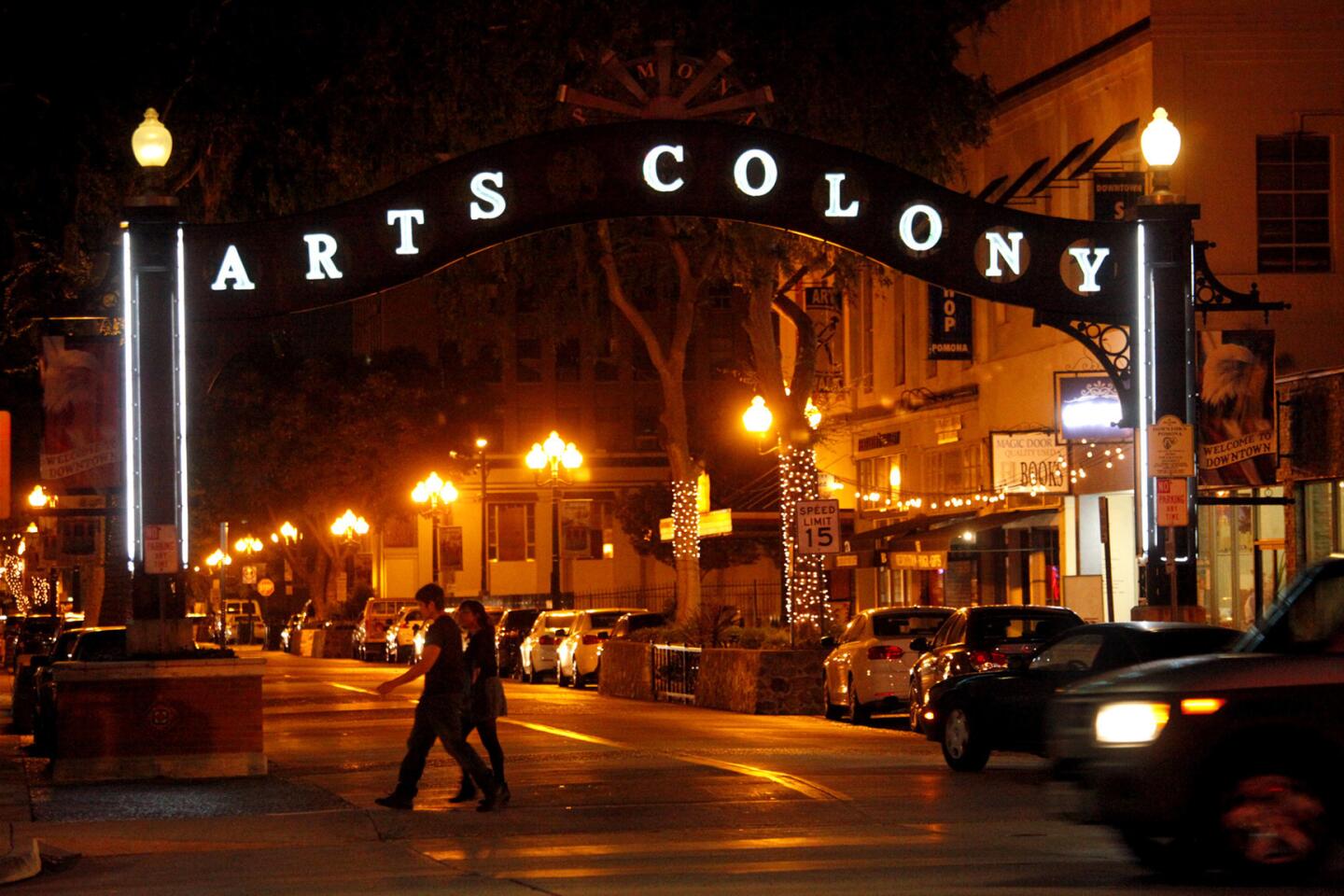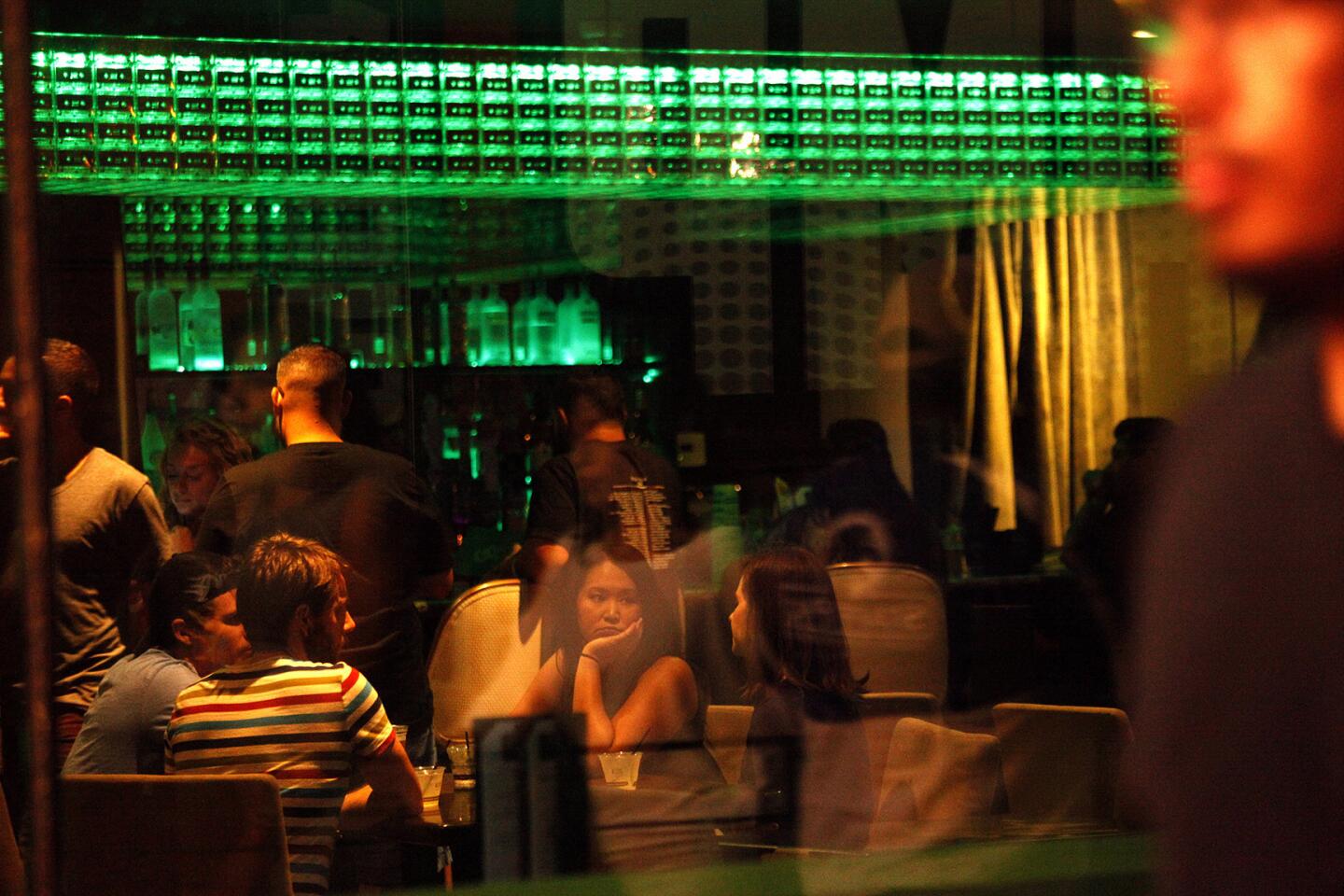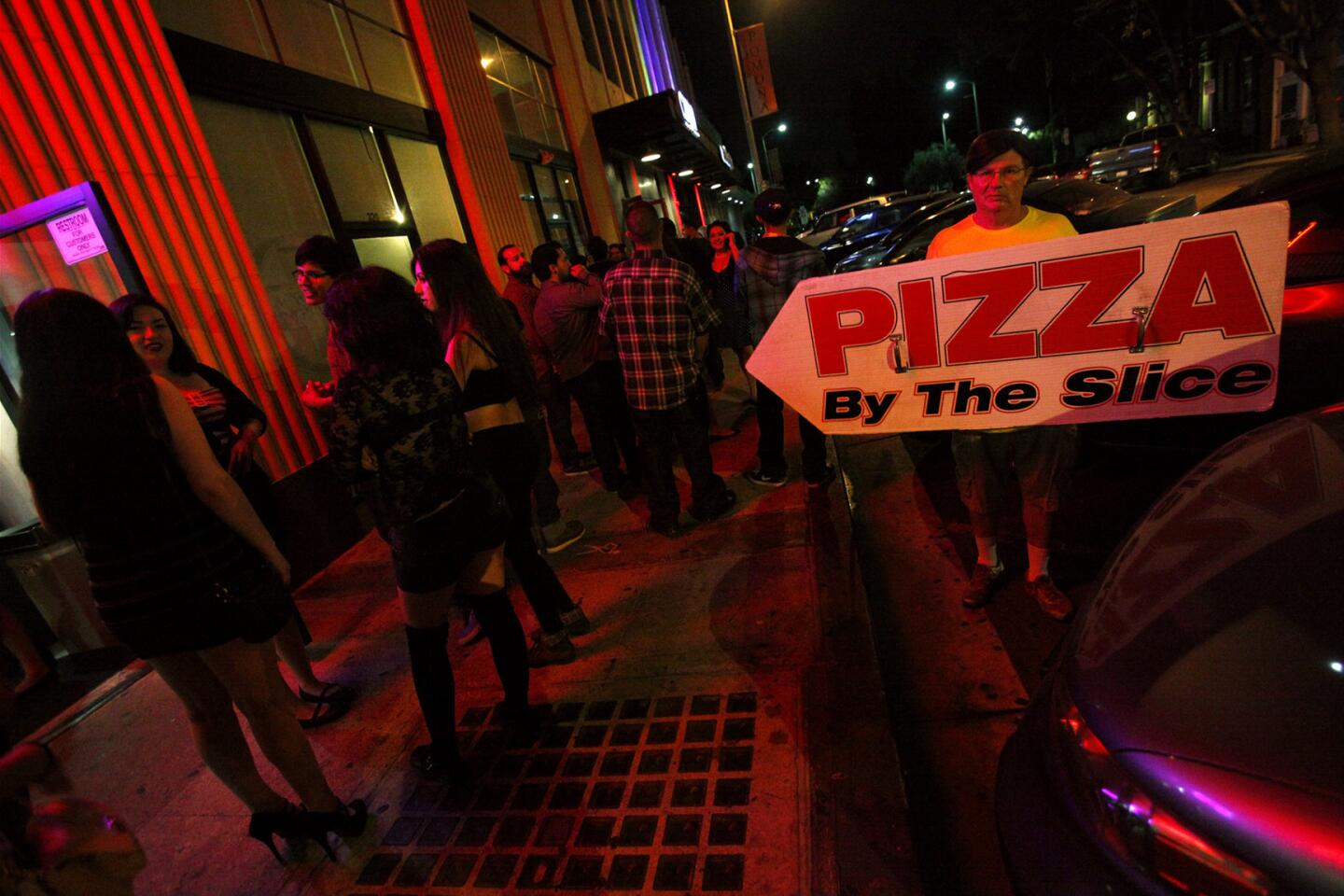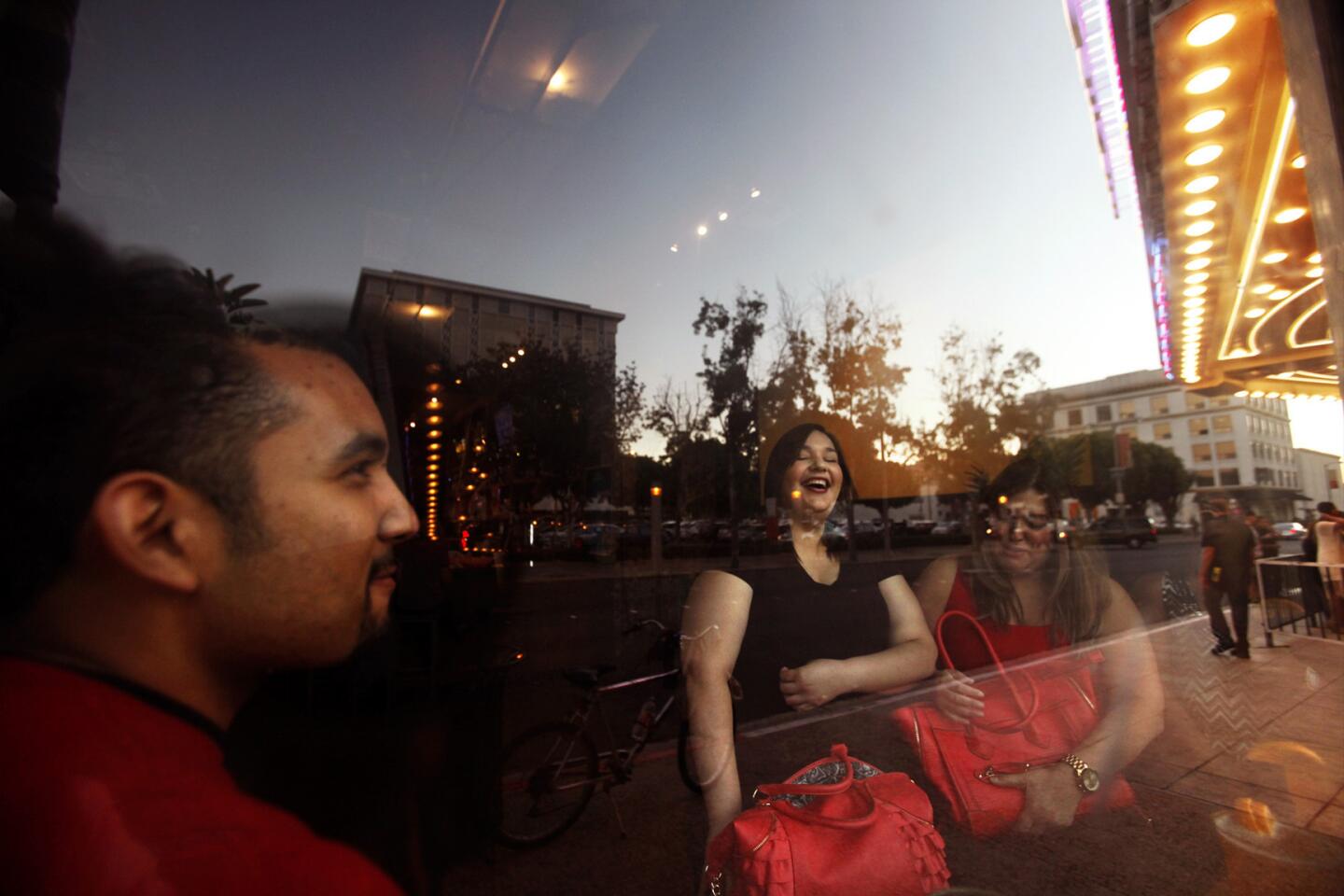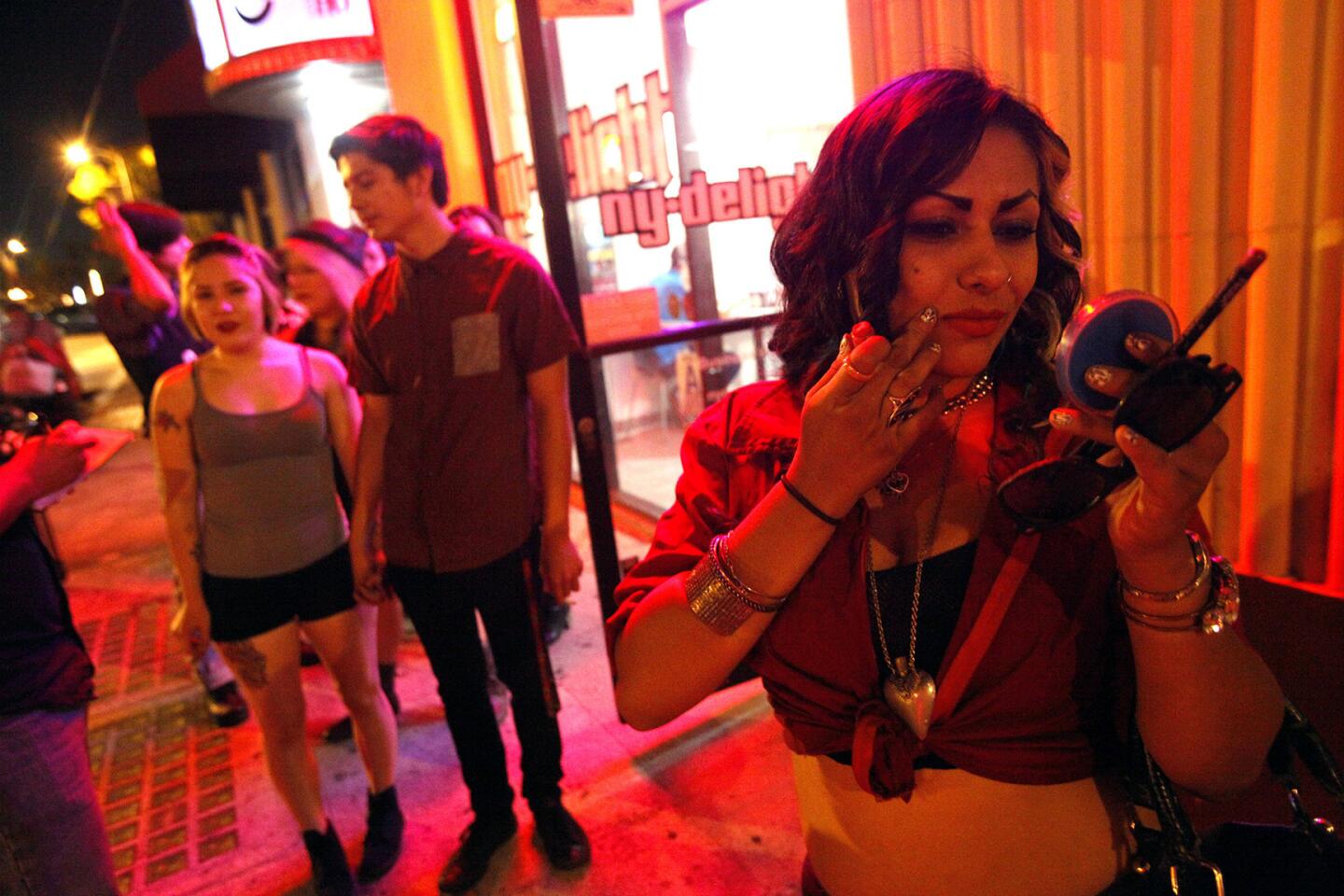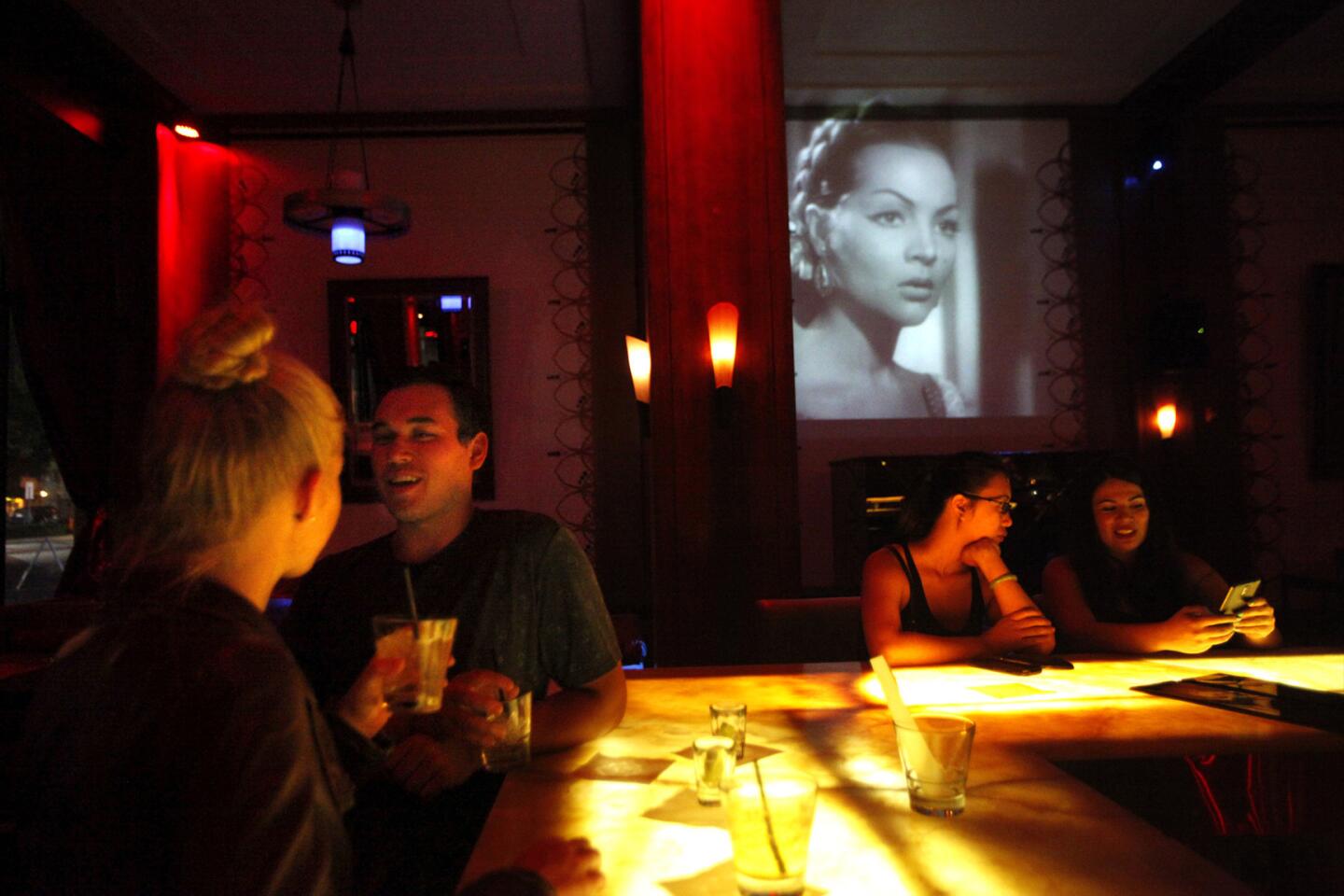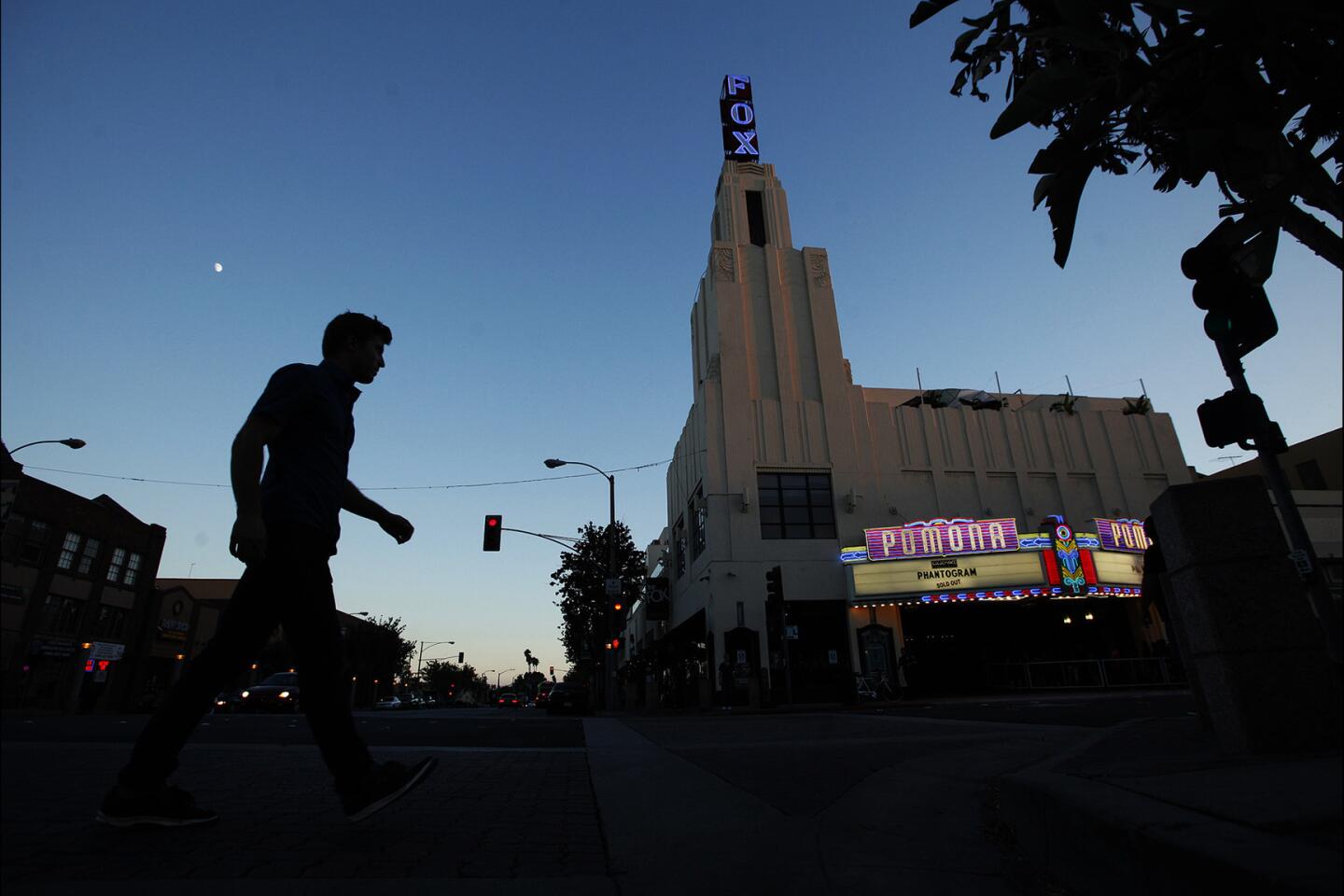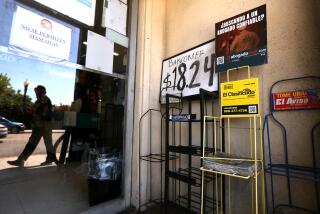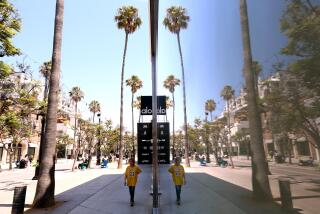Nightlife is reenergizing Pomona -- and creating some new problems
- Share via
In the late 1990s, John Peña struggled to draw people to his underground parties in downtown Pomona. Months of planning and advertising couldn’t compete with the city’s reputation for crime and gang violence.
“When I came here on Friday or Saturday night, it was a ghost town,” Peña said.
So he moved on, focusing his energy on trendier areas such as Hollywood, Long Beach and Pasadena to build a nightclub empire. Then, four years ago, he was invited to an event at the recently remodeled Fox Theater Pomona, which was attracting large crowds.
Peña rediscovered Pomona.
He closed his two nightclubs in Pasadena and moved his business to downtown Pomona, signing leases for four different venues. Now Peña owns six restaurants and nightclubs in the city. Business is good, he said.
Peña is one of several business owners benefiting from a booming night scene in a city once tagged as dangerous.
Though a financial boon for the city, the new nightlife has not come without the sort of problems that often accompany a sometimes more rambunctious scene. Maintenance crews power-wash the sidewalks and remove graffiti. The Business Improvement District contracts with two Pomona police officers and a private security firm to do extra patrols.
Despite progress, Pomona is still a city that experienced a 70% increase in homicides last year.
But the Business Improvement District’s investment seems to be paying some dividends — and as with most of L.A. County, violent crime levels remain low by the standards of the 1990s. Scores of 20- and 30-somethings dressed in their best attire line up outside the front doors of the clubs in downtown Pomona. They appeal to different demographics: Vive is a tequila lounge that plays Top 40 hits, Carnaval offers Mexican Banda music, and 340 is a popular gay club.
“There’s so many places down here to hang out,” said Jackie Quezada, 18, of Montclair during a recent trip to the area for a concert. “Any time you come out here, you’re going to have a good time.”
Developer Jerry Tessier teamed up with Goldenvoice — the entertainment company behind the Coachella music festival — to renovate the Fox. A lot has changed since the venue reopened in 2009, he said.
“Now we have a critical mass. You can go from event to event,” Tessier said. “You can have dinner at any number of good restaurants and go to a show and when it lets out at 11:30 at night you can go to nightclubs and bars. It’s not just a one-destination scene.”
Downtown property owners said because Pomona can be accessed from the 10, 60 and 71 freeways, it has become a destination for people from the rest of the Inland Empire, the San Gabriel Valley and Orange County.
Mike Garza, 32, of Temecula Valley traveled 40 minutes for a Morrissey-themed dance night at one of the clubs. He likes the trendy, local feel of the area and says he prefers it to the “pretentious” crowds of L.A.
“It’s cool,” he said. “And it’s the Inland Empire. I’d rather stay here.”
The growth of nightlife has helped Pomona’s city coffers. Night parking in downtown lots is now metered, which the Downtown Pomona Owners Assn. estimates brings in $300,000 a year. There’s also the extra revenue from property taxes paid by the businesses.
And Pomona’s image is slowly being rehabilitated by downtown’s cultural hub, which includes popular art galleries and two now well-established music venues: the Fox and the Glass House.
But the success of nightlife businesses has also led to some conflict. Some residents complain about a parking crunch, fights between drunk partygoers and the trash that’s sometimes left behind in the mornings.
And some art galleries, part of the first wave of the area’s revitalization in the 1990s, have started leaving.
Juan Thorp and his wife Susie Eaton ran the Bunny Gunner art gallery in downtown for 13 years before moving to Claremont last year. When the nightclubs came, regular clients — deterred by a difficult parking situation and rowdier crowds — stopped showing up and sales began to drop.
Thorp said a piece of art was stolen when someone smashed a window in one of his galleries and an artist he invited to the area was almost punched when a fight broke out on the sidewalk.
“You pick one or the other: art or entertainment,” he said. “And right now, entertainment is winning.”
Capt. Mike Ellis of the Pomona Police Department said fights and minor property crimes do happen, but they are at a level he feels is acceptable for a busy area. He said the main issue the city will confront going forward is complaints about the noise generated by outdoor venues.
David Armstrong, a property owner in downtown, said tenants have left his building near the Fox Theater because of the noise from nightclubs that are allowed to operate until 4 a.m.
Armstrong says city leaders have “turned a deaf ear and a blind eye” even as nightclubs violate the city’s noise ordinance.
The City Council is currently considering revamping that ordinance, which measures downtown noise complaints through decibel readings.
“Some people say, ‘it’s too noisy,’ so do we kill the L.A. County Fair, too?” council member Debra Martin said. “We have to be conscious of our success. If we’re too strict we’ll go the other way. We have to be really careful of what we do in the future.”
Opponents of a stricter ordinance, like Peña — who has invested $4.5 million in the area — say those who complain to the city are a small minority. In a 60-day period this summer, Pomona had 14 complaints about music in the area.
“We’ve created an entertainment district now,” Pena said. “Ninety-nine percent of the people that are going to move to downtown Pomona ... want that lifestyle.”
Twitter: @James_Barragan
More to Read
Sign up for Essential California
The most important California stories and recommendations in your inbox every morning.
You may occasionally receive promotional content from the Los Angeles Times.
